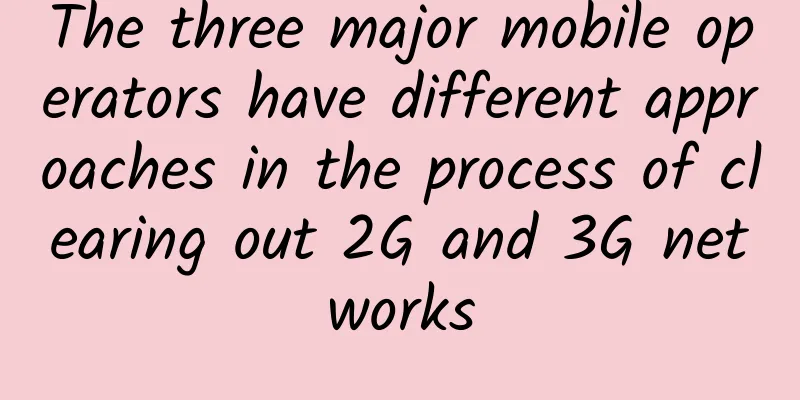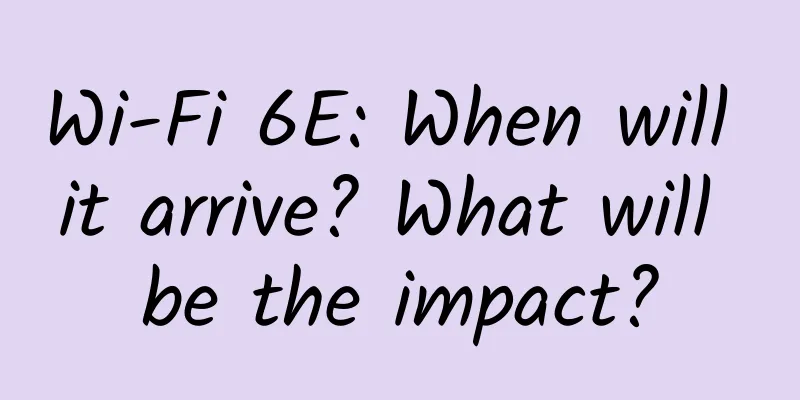The three major mobile operators have different approaches in the process of clearing out 2G and 3G networks

|
The deployment of the three major mobile operators of 2G and 3G is different. It is not a complete withdrawal, but a selective withdrawal.
In fact, the three major operators, China Mobile, China Unicom and China Telecom, have already started or are preparing to phase out 2/3G, but each has made different choices, mainly due to their different network deployment situations. China Unicom chose to withdraw its 2G network, which is its GSM. Speaking of China Unicom's GSM, it has always been in an awkward position in Unicom's network system. The first license China Unicom obtained was the GSM license, and it also built some GSM base stations. It was developing well, but when China joined the WTO, the United States put forward a condition that China must accept CDMA. The final result was that China Unicom had to build both GSM and CDMA networks at the same time. China Unicom's GSM network itself cannot be compared with China Mobile's. China Mobile's GSM coverage is still too high. In this case, China Unicom's networking focus tends to be CDMA. However, when the C network coverage is almost complete, the telecommunications industry reformed again. China Unicom's C network was sold to China Telecom. China also entered the 3G era. China Unicom's work focus shifted to the 3G network, that is, the construction of the WCDMA network. WCDMA is a 3G standard that supports both voice and calls. This puts GSM, which only supports calls, in an awkward position and has never had good coverage. Although China Unicom's GSM coverage is not very good, the frequency band is very good, and the low-frequency 900M band is more suitable for basic coverage. Among the 4G networks, China Unicom has always been criticized for its poor coverage. Because China Unicom is the poorest among the three major operators, it needs 900M frequency to build LTE, because low frequency can use fewer base stations to achieve better coverage. A very important application of 4G is NB-IOT. This IoT application also requires low frequency, and low frequency has stronger deep coverage capability, which is also needed by the IoT. China Mobile chooses to withdraw from 3G network According to reports, China Mobile has already started to phase out its 3G network in 2019, and many 3G base stations have been decommissioned. So why is it 3G that is being phased out, and not 2G? In fact, people who are more familiar with the three major operators may have heard that China Unicom and China Telecom are now clearing out their 2G networks. This is because their 2G runs on the important 900MHz frequency band, and it will be more efficient to give such a good frequency band to 3G and 4G. However, China Mobile's 4G network is still unable to carry voice calls, and this work is done by 2G. To change this would certainly cost a lot of manpower and resources, so the 3G network had to be withdrawn. In addition, it costs a lot of money to maintain these 2G and 3G base stations and networks every year. Clearing these networks will relieve a lot of economic burden and give more strength to prepare for 5G networks. Even netizens see it clearly: "This is making way for 5G!" Only China Telecom 2G/3G dual G is cleared As early as October 1, 2018, China Telecom announced that it would stop storing 2G and 3G mobile terminals. "The issuance of this new regulation will not have much impact on some users, but for users in remote mountainous areas, there will be no communication available! Because the 2G/3G mobile phone terminals will no longer be put into storage, it means that the 2G/3G network will be cleared. For telecom users in remote mountainous areas, 4G is still a luxury, let alone the currently popular 5G. Stopping the storage of 2G and 3G mobile phones is actually the first step in clearing out the 2G/3G network. After the mobile phones are stopped from being stored, clearing out the 2G/3G network will become much easier and can also save a lot of costs. Every year, the investment made by telecom in 2G/3G networks is also very terrifying. The clearance seems to be a helpless move, but it is actually for the better development of 5G networks. Final Thoughts Times change, and what changes with time is not only our age and appearance, but also many things closely related to us. Technology is gradually innovating, giving us more new functions, but more of the feelings of the past. |
<<: Cloud computing: the first city of new infrastructure to emerge during the epidemic
>>: What does cutover mean in network engineering?
Recommend
Why Manufacturing is an Excellent Use Case for Edge Computing
As IoT devices become more common, edge computing...
When wireless communication officially becomes a strategic energy source: The butterfly flaps its wings in the 5G era
Speaking of 5G, what do you think of first? If yo...
Edge computing workloads: VMs, containers, or bare metal?
We live in an age of connected and smart devices....
Verizon achieves 711 Mbps 5G upload speed
[[429131]] Verizon said it achieved upload speeds...
NetEngine series intelligent routers help enterprises build safe and reliable production networks
[Shenzhen, China, November 8, 2022] At the "...
"Have you eaten?" | A tragic experience of a message
[[405615]] After get off work, you feel empty and...
Revitalizing smart cities with edge computing and 5G
[[381381]] As we recover from Covid-19, we have a...
How to embrace the future with Network as a Service (NaaS)
In the digital age, the Internet has become an in...
From trials to use cases, the big 5G stories of 2017
In 2017, 5G gradually moved from the laboratory t...
How does the famous CDN acceleration service accelerate access and distribute content?
Hello everyone, I am Bernie, an IT pre-sales engi...
Software testing requires understanding of these network knowledge points
1. Network Classification Telecommunications netw...
South Korea has nearly 13 million 5G users as of January
Korean media cited data from the Ministry of Scie...
Telecom operators tighten cloud sovereignty and no longer want to be the big guys behind the scenes
"Carrier cloud" represented by China Te...
Don’t want to be one of the 70% who fail in digital transformation? Riverbed Application Performance Management Upgrade
Enterprises are in the stage of high enthusiasm f...









